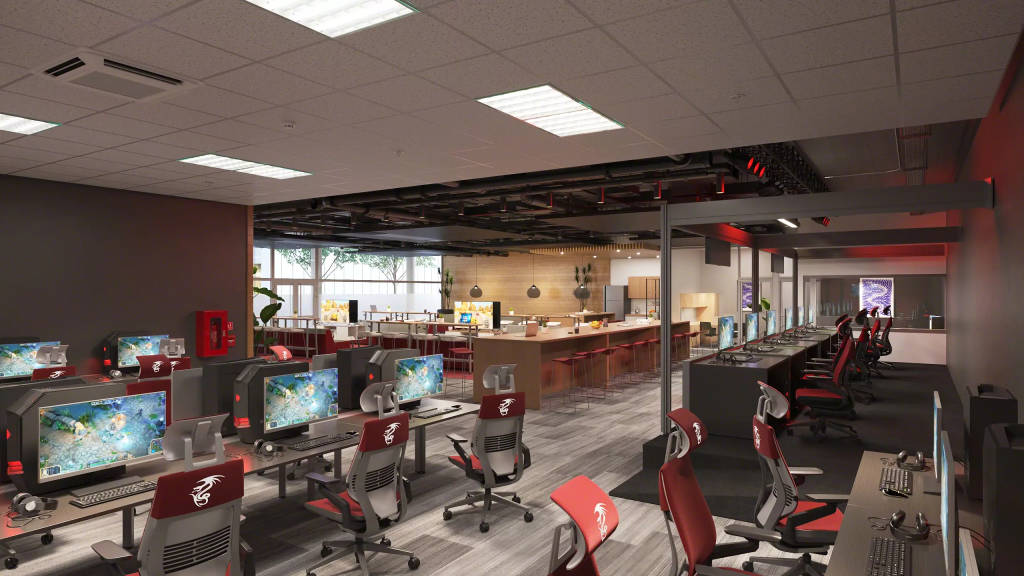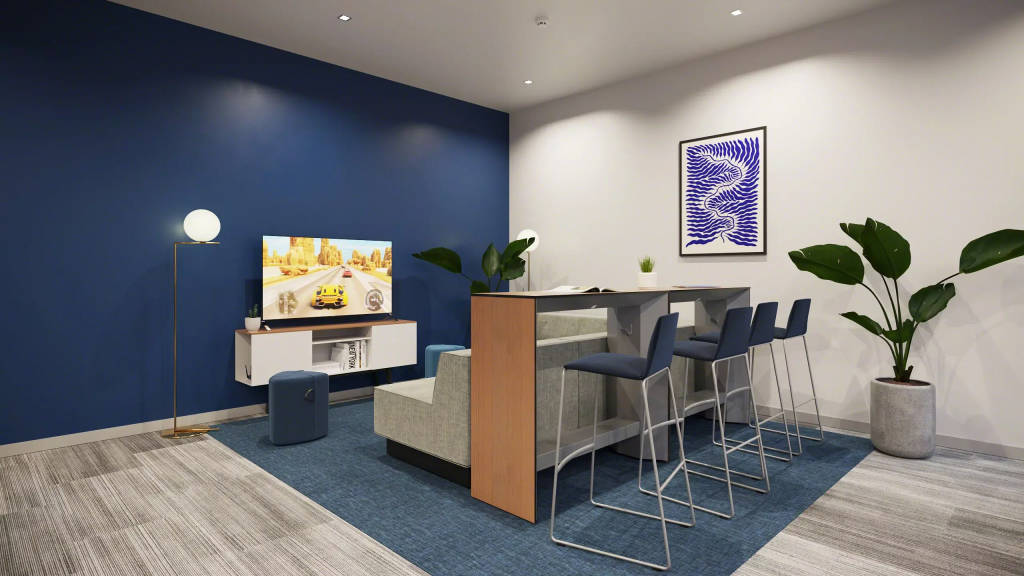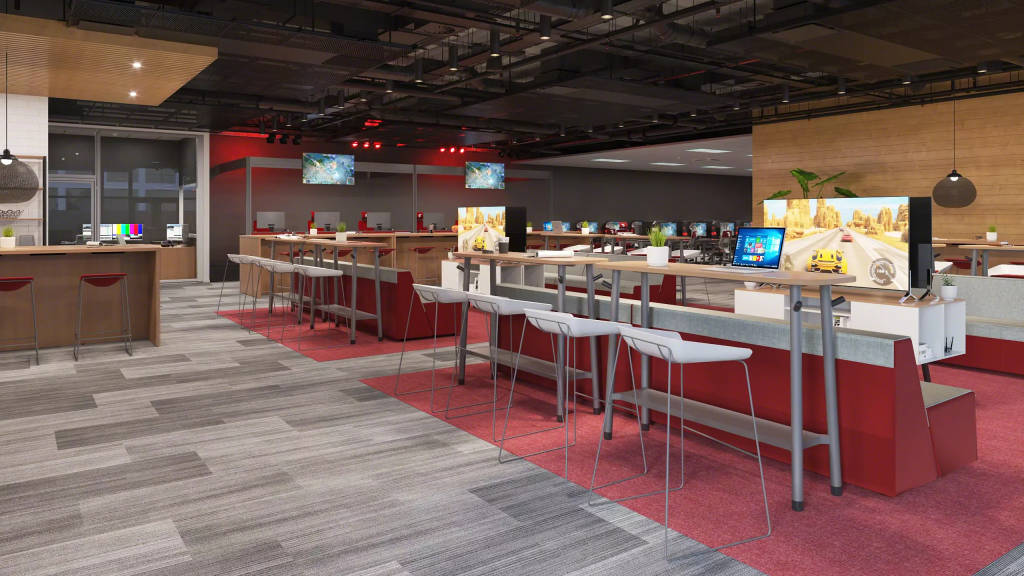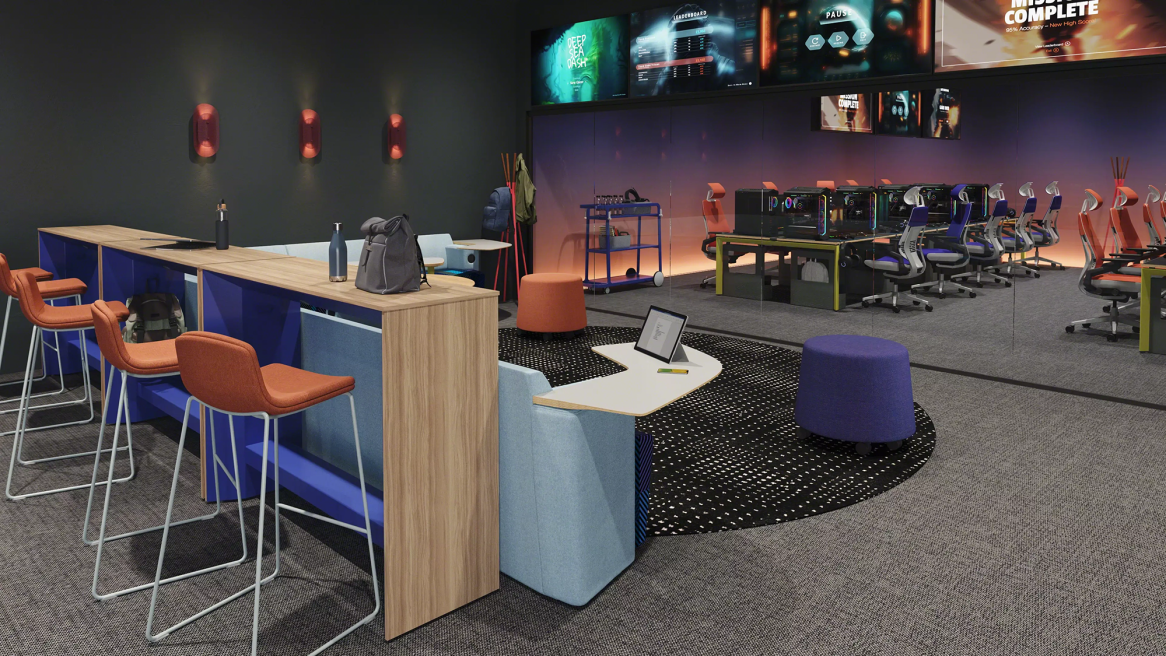More Than Just a Game: Designing for Esports
Four essential considerations for creating optimally effective gaming spaces.
The world of esports is big and getting bigger by the day. It’s no surprise that at a fast-growing number of schools, gaming has become a part of a new normal: tech-infused student experiences.
The phenomenon of esports has skyrocketed during the past decade and shows no signs of letting up. Already there are more than 3 billion gamers worldwide. At least 175 universities in America are offering scholarships for esports, and even more have esports teams.
Why are schools rapidly integrating esports into their programs and facilities? New research from Steelcase Learning provides a compelling, big-picture answer: Esports can positively impact learning experiences for students and help schools succeed in turn.
“After a two-month deep dive of research and listening to coaches and gamers, it became clear to us that esports is a great opportunity for schools to attract and retain students they might not have gotten otherwise,” reports Mark Walters, manager of growth initiatives for Steelcase Learning.
“Even more important,” he continues, “esports helps students forge connections to the institution and each other, become more engaged and improve happiness and wellbeing at school.”
Go Beyond the Game
As with any athletic sport, schools embracing esports and sponsoring teams can attract competitive gamers looking for the opportunity to further flex and hone their skills while in school. At the same time, on-campus gaming opportunities can engage students who might not otherwise participate in extracurricular activities, helping them find “their people” and build strong personal connections that over time can be the difference between a positive and negative experience at school.
Moreover, gaming teaches useful skills that go beyond the game. For example, it can help students develop the persistence needed to “fail forward” – students keep trying when unsuccessful and improve over time, an essential lesson for both learning and life. Involvement in esports can also sharpen skills such as creative strategizing, inventive problem-solving, effective communication and productive collaboration. What’s more, it can spark interest in budding industries and career opportunities: I.T. and content creation, as well as adjacent fields such as engineering, business, education, media, entertainment and more.
But positive gains like these don’t just happen automatically as a given of the game.
“Our research has made it very clear that when bringing gaming and esports onto campus, it’s crucial for schools to place a concerted focus on student engagement,” says Walters. “Esports can be a magnet for getting students involved in campus life and fostering deep connections. There are opportunities for schools to use gaming as a tool for creating strong interpersonal connections that can make or break a students’ experience at school. And space has a huge role in helping accomplish this.”
Start Your Journey
Take the next step toward creating effective esports spaces by connecting with us for more information on our insights, applications and solutions.
Four Design Considerations
Recognizing the importance of esports in building skills and improving student outcomes, Steelcase research identified four essential design considerations for creating optimally effective gaming spaces:
Enhance gamer performance
- Celebrate team culture — think school branding and bold colors that create a sense of intensity and team spirit at first sight
- Keep lighting dimmer in battle stations to maximize on-screen contrast and improve player focus
- Provide 48” – 54” table surfaces in battle stations — big enough for keyboards and peripherals, but small enough to keep teammates close
- Prioritize comfortable, supportive seating that adjusts to a range of users and postures, from laid-back to perched and upright

Support gamer wellbeing
- Thoroughly consider adjustability in terms of the gamer, the game and the situation (e.g., monitor depth and height, seat-recline tension, seat height, arm angle and height)
- Provide worksurfaces that are 36” – 48” inches wide so there’s enough distance to give players the psychological security of a personal zone, as well as the reassurance of teammates nearby
- Create adjacent spaces for decompression breaks to debrief with coaches and teammates or just hang out and relax
- Consider kitchen islands for refreshments and wellness zones for yoga and ergonomic exercises

Facilitate gamer teamwork
- Embrace density so teammates can stay close
- Keep battle stations unshielded to ensure clear sightlines and connections between gamers
- Include collaborative zones for video-on-demand reviews

Build community between gamers and spectators
- Plan for observation zones where spectators can comfortably watch without distracting gamers
- Create face-to-face zones adjacent to gaming areas to encourage deeper connections
- Consider acoustic baffles to lower ambient noise
- Create a zone for video production and broadcasting
- Leverage large displays for compelling in-person and online spectator experiences
- Build social zones so gamers can connect with each other and relax between battles

Up Your Game
Whether you have over 10,000 square feet or as little as 1,000, designing with these considerations in mind can result in an impressive and hardworking esports center that ups the game and increases opportunities for students to make the connections that are critical for their success.
“It’s all about achieving a balance between intensity and relaxation, individual focus and team camaraderie, meeting the needs of both gamers and spectators,” Walters summarizes. “Through our research, we know spaces can help with this. And we’re here to help.”
Explore Planning Ideas
Create esports spaces that maximize student engagement and success.


